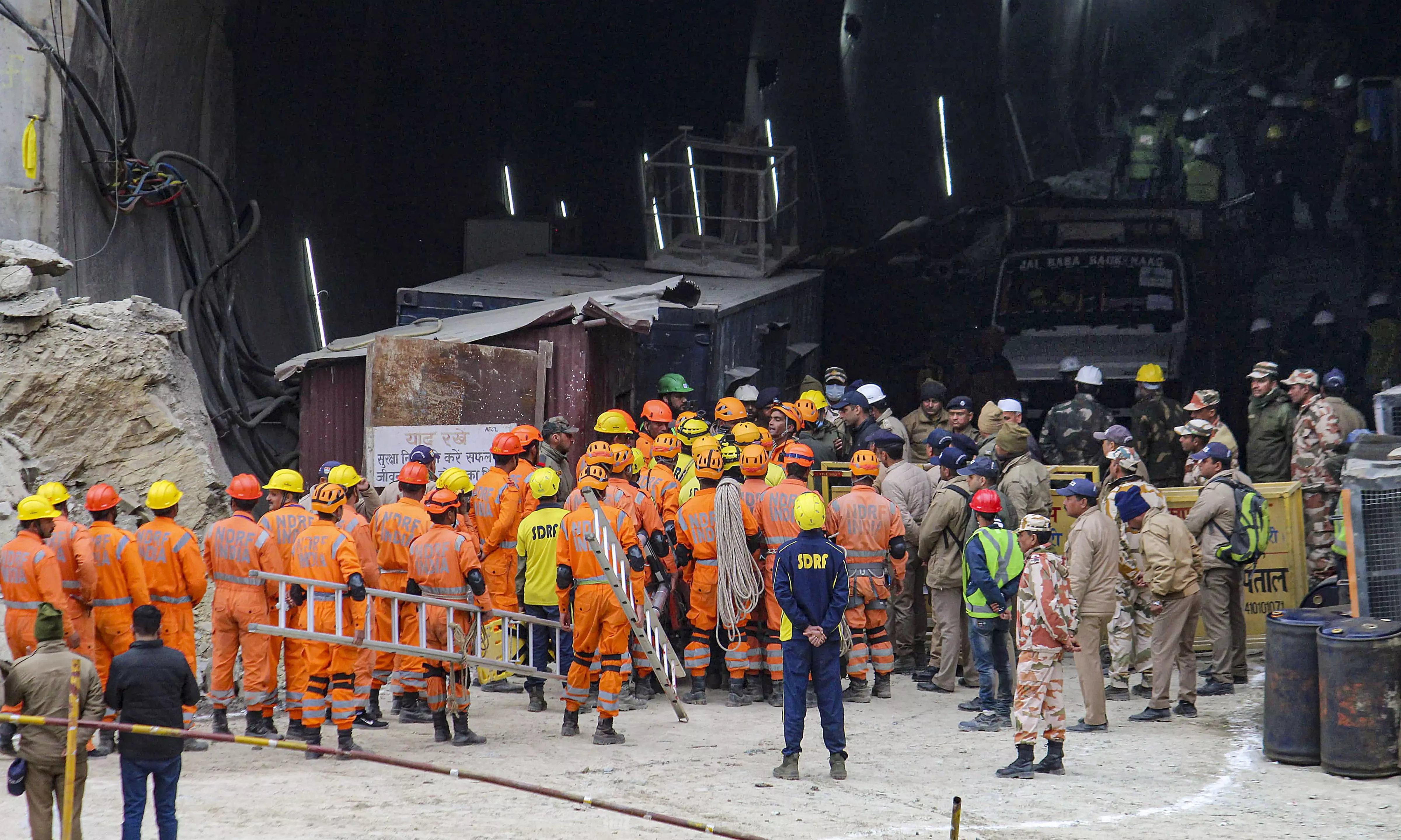
Uttarakhand tunnel collapse and rescue of 41 workers — a quick recap
Why the Silkyara tunnel collapse happened, and how the rescue was carried out against the odds

After a 17-day ordeal, rescue workers on Tuesday (November 28) successfully managed to break through to the 41 workers who were trapped under the debris of the collapsed part of the Silkyara tunnel in Uttarakhand.
The rescue operation, which hit multiple roadblocks due to the hilly terrain of the tunnel site in Uttarkashi district, made considerable progress after rat-hole mining experts were roped in to dig through the remaining 10-12 metre-horizontal stretch of the rubble on Monday (November 27).
Here are some basic details, recapping how the accident occurred, and how it was resolved.
Where and how did it happen?
The accident occurred in the Silkyara tunnel, a 4.5-km-long passage. Located in Uttarakhand's Uttarkashi district, the tunnel is part of the Centre's Char Dham project that aims to offer all-weather connectivity between the Hindu shrines of Badrinath, Kedarnath, Gangotri and Yamunotri.
It's a double-lane tunnel connecting Silkyara and Dandalgaon, and one of the longest under the Char Dham project. At the time of the accident, around 2.4 km from the Silkyara side and 1.75 km from the other side had been built.
The accident occurred when only 500 meters of work remained to be completed. On November 12, a section of tunnel 205-260 metres from the Silkyara side collapsed. Workers who were beyond the 260-metre mark were trapped as the exit was blocked. The crumbling down of rocks, and the pile-up of debris trapped 41 workers who are migrants from various parts of India.
A substantial debris pile measuring 60 meters obstructed the tunnel but the workers had power and water supply that lasted a while.
A landslide in the fragile Himalayan region will likely lead to the collapse, but a government-ordered probe will establish the facts. Hyderabad-based Navayuga Engineering Company Ltd, which has reportedly handled such projects before, was building the Silkyara tunnel.
How was the rescue carried out?
Initially, a 4-inch communication pipe was driven in, providing essential supplies such as oxygen and dried fruits, nuts, and popcorn. A breakthrough was achieved with a 6-inch pipe delivering hot food like kichdi and pulao.
Setbacks occurred when attempting to drive in pipes with a 1.2-metre diameter and 6-metre length, with 11 to 12 pipes planned to cover the 60-metre span. Welding was in progress as part of the tunnel construction, and the steel bits impeded the rescue efforts.
Five plans were initiated. The rescue mission was mostly indigenous, apart from an auger machine brought in from the US. Mining expert Chris Cooper from New Zealand was also brought in. Success was achieved, but at around 10 metres, disaster struck again as the auger blades broke upon hitting steel rods from the construction work.
Welders from Bihar and UP manually cut through obstacles but faced difficulties progressing beyond a certain point. With only 10 to 12 metres left to navigate, it seemed like work would come to a halt.
Plan B, a vertical drill, was introduced while work continued on Plan A, which was horizontal drilling. Rat-hole miners from Bihar and Assam were brought in to manually dig using bare hands. Finally, the rescue team could reach the workers.
Agencies involved in the operation
National Highway Infrastructure Corporation (NHIDCL)
Border Road Organisation
National Disaster Response Force (NDRF)
SSPL, especially in chemicals
Navayuga Engineering
Indian Air Force
Equipment used
High-pressure injection equipment
Auger machine
Pipe-pushing machines

